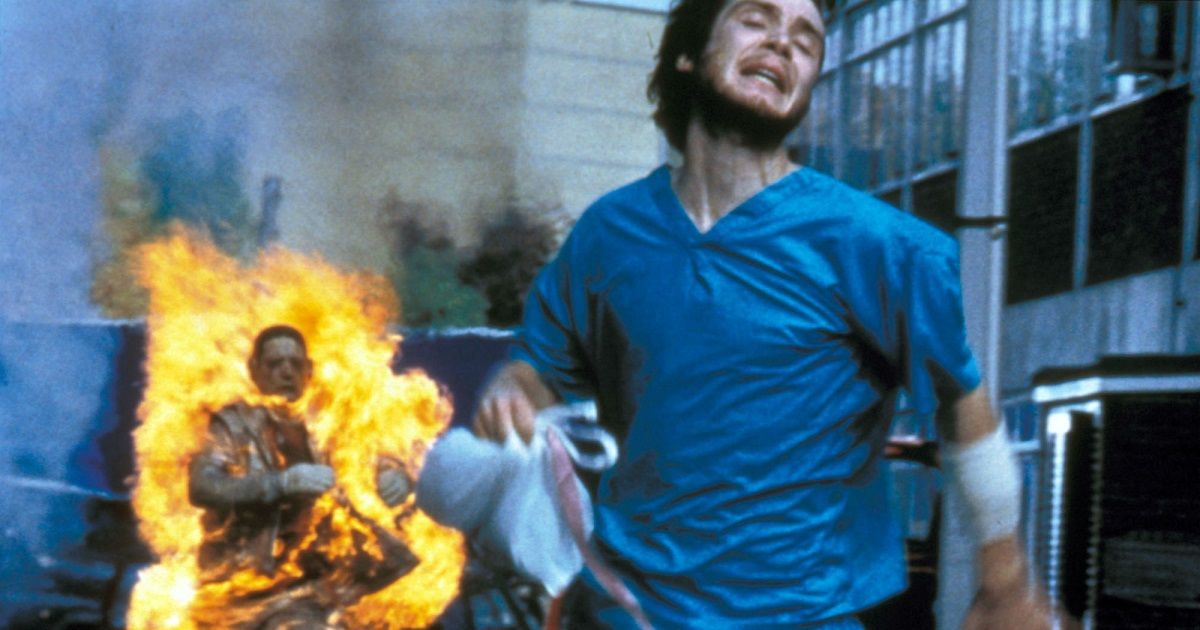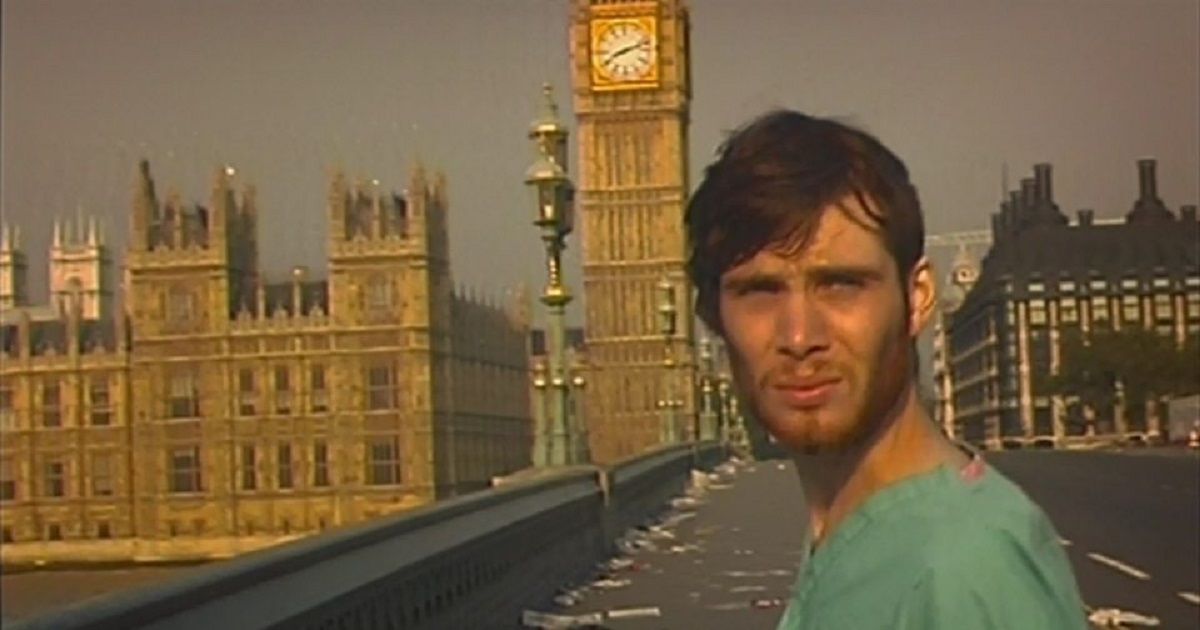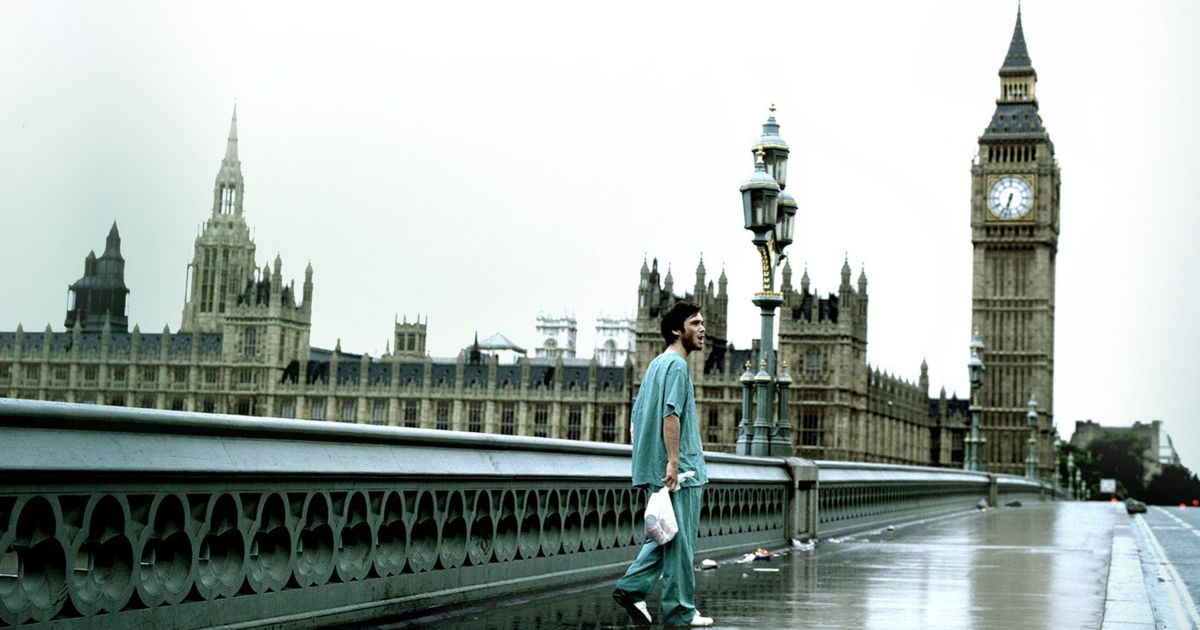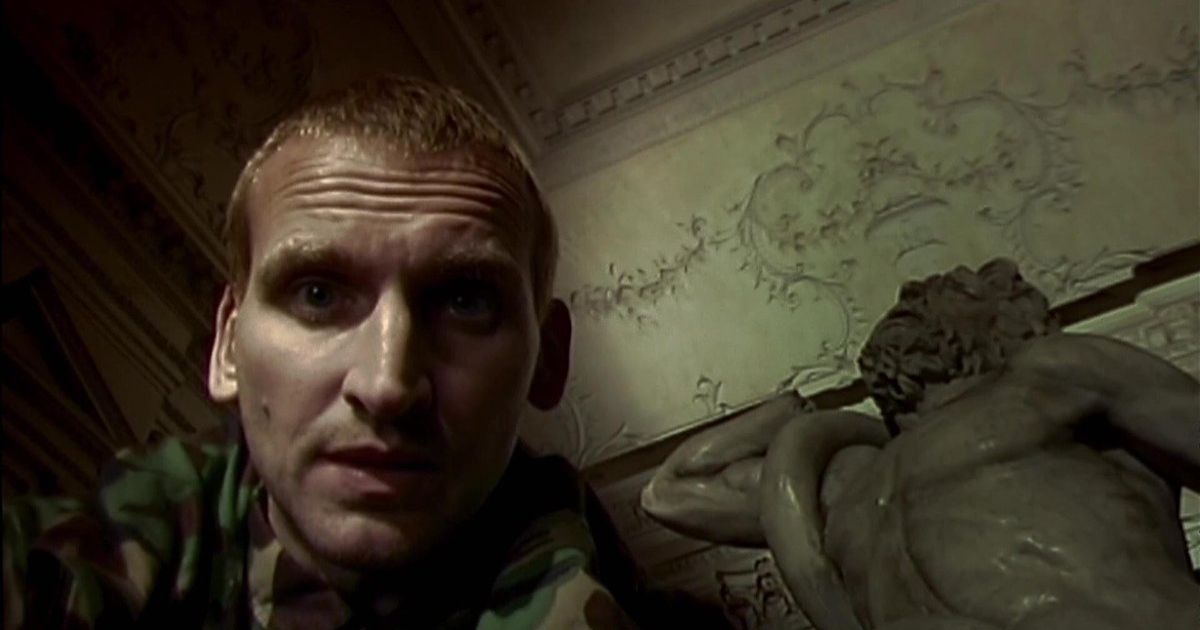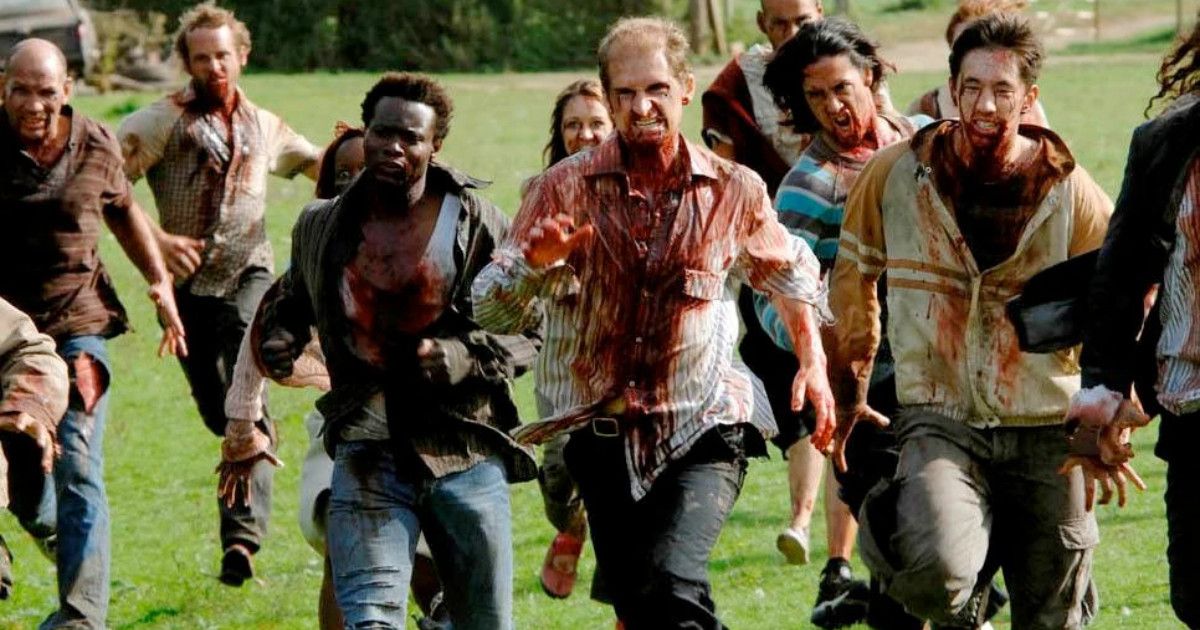Zombie films are made by the dozen every year, but only a handful remain relevant in current times. While some zombie films are outright gimmicky, the other more serious ones tend to overly rely on horror's mediocre tropes, eventually culminating in a dilution of the story.
Getting a zombie film just right isn’t an easy feat, but getting it right on a shoestring budget is nothing short of a miracle, and that’s exactly what separates genius from average. Danny Boyle’s 28 Days Later is a detailed case study of how to use the conventions of a genre to strengthen the narrative as opposed to making the convention the narrative.
Update October 3, 2023: In honor of 28 Days Later 20th anniversary release in the United States, this article has been updated by Yosra Ben lagha with more reasons why 28 Days Later is one of, if not the best, zombie movie out there.
As soon as 28 Days Later hit theaters, it became a cultural phenomenon. A horror movie that was loved by critics and fans alike, hitting the mainstream as well and grossing $84 million worldwide against an $8 million budget. Horror films were in an interesting period, as it appeared the monsters of the past century, from vampires and werewolves to the slashers of the 80s, were having a difficult time adapting to a new millennium.
Yet 28 Days Later came along and reinvented the zombie genre and kickstarted an era that led to stories ranging from The Walking Dead to Warm Bodies from iZombie to The Last of Us. Zombies are now more popular than they ever were before, and a lot of it can be traced back to 28 Days Later. Does the film deserve the title of best zombie film of all time? Yes, and here is why.
Is It Even Technically a Zombie Film?
28 Days Later is written by novelist turned-director Alex Garland, who later on went on to direct films like Ex Machina and Annihilation. A common argument that often comes to the surface whenever 28 Days Later is mentioned is its categorization as a zombie film. This is due to the fact that the virus depicted in the film doesn’t kill the host, technically making them undead. Garland clarifies this by insisting “It’s a zombie movie,” he says definitively. “Whatever technical discrepancies may or may not exist, they’re pretty much zombies.”
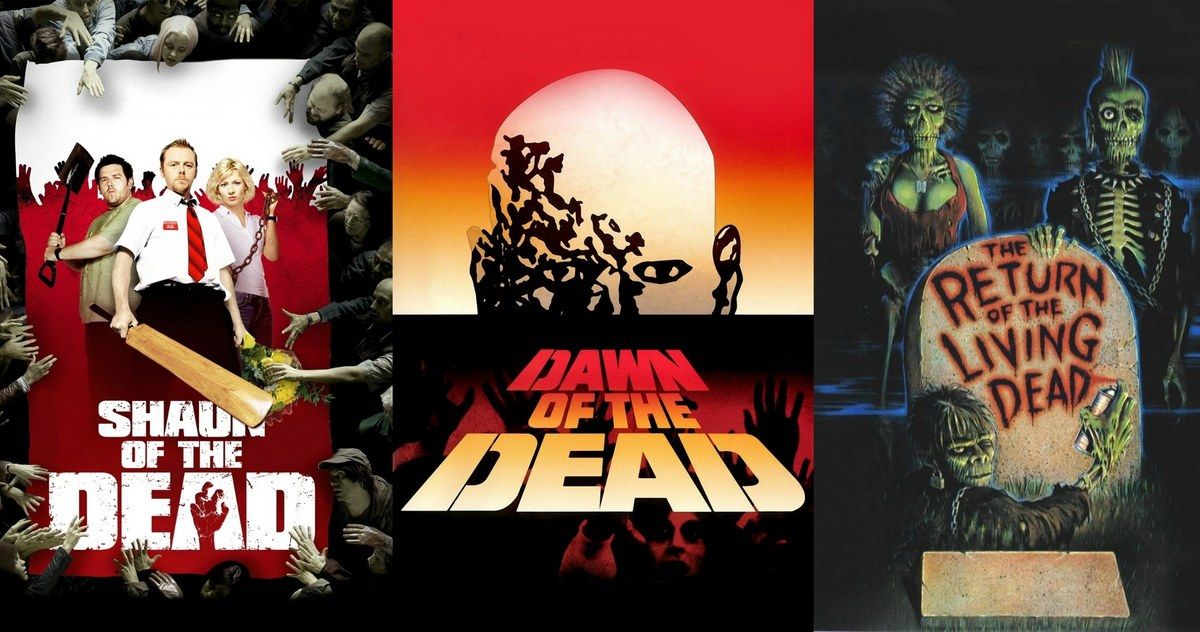
The Best Zombie Movies of All Time
From Dawn of the Dead to Shaun of the Dead, these are the best zombie movies ever made over the past six decades.The only catch to this is the director of the film, Danny Boyle thinks otherwise, causing uproar within the various corridors of debate for film fanatics. The main point of contention regarding the film's classification as a zombie film falls on whether the people infected with the virus are considered to be dead or alive. Keeping the technicality aside, the film’s story relays the fact that a virus breaks out and causes the infected to act out in an abnormally bloodthirsty manner, with the degree of how dead the host is being up for contention.
The Opening Scene
The opening scene can make or break a movie. It's what keeps the audience glued to their seats, eyes wide open in anticipation of what's next, and it's also what can make them yawn and continue their search for the perfect movie elsewhere. A few movies have opening scenes as outstanding as 28 Days Later. Considering its small $8 million budget, the movie was certainly beautifully shot, including its visually impressive, hair-raising, and unconventional opening scene in which Jim (Cillian Murphy) stands alone in the streets of an abandoned London, wondering where everyone else went. The bicycle courier, Jim, wakes up from a severe coma that lasted 28 days in a deserted hospital and an empty city.
The film’s production supervisor, Andrew Macdonald, said that the empty shots had to be filmed between four and five in the morning before rush hour and described the experience as, "thrilling but strange as well". The thrilling and strange emotions that the empty streets provoke create a unique cinematic experience not just for the crew but for the audience as well. It foretells a mystery that could bring Jim's doom and feels like the untrustworthy calm before the storm. The silence and emptiness help put all the focus on Jim's confusion, fear, and unsettled emotions, which creates the kind of tension needed before the violent appearance of the undead.
This opening became a new benchmark for post-apocalyptic fiction in the 2000s. 2010's The Walking Dead series opens in a similar manner, with Rick Grimes waking up in a hospital bed to find a world destroyed and ravaged by zombies. One could make the argument that the opening scene of 28 Days Later is one of the most defining openings to a horror movie, alongside the POV kill from Halloween and the phone call in Scream.
An Original/ Realistic Scenario
In most movies, zombies are self-evident creatures whose presence does not necessitate any further explanation. They exist just because. The scenario for these types of movies is usually very simple and includes a fight between two groups: the undead and the survivors. 28 Days Later puts a stop to weak scenarios by introducing a very interesting backstory to the emergence and multiplication of zombies. Boyle combines a pandemic narrative with a post-apocalyptic environment setting a story that respects its audience's intelligence.
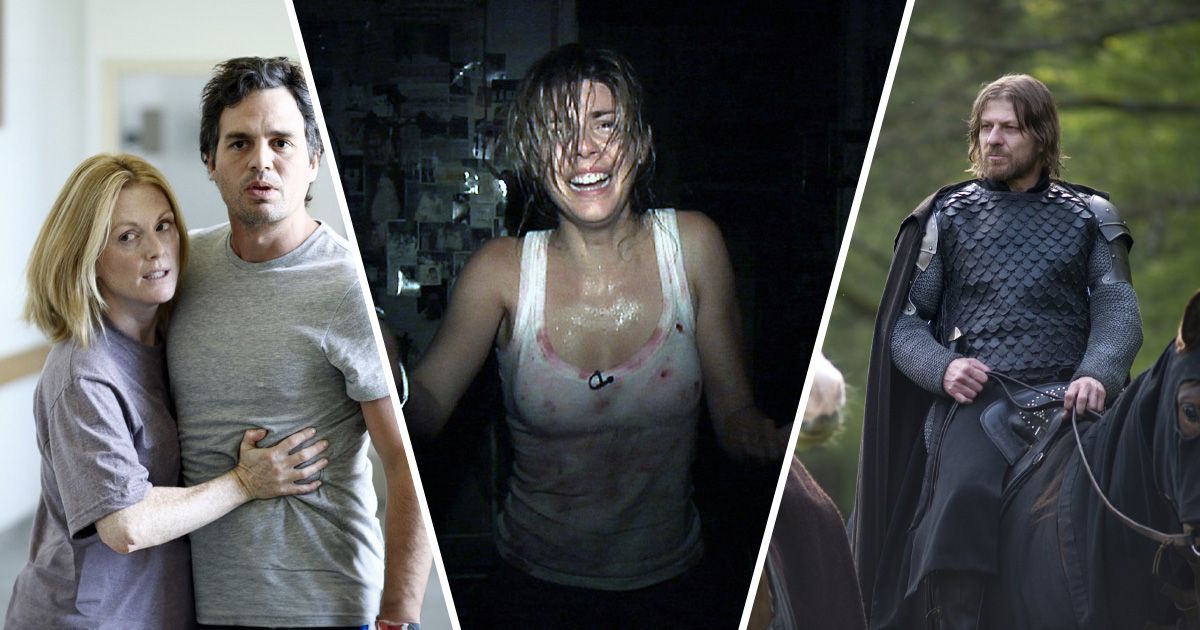
Best Movies About Pandemics and Viruses, Ranked
Sometimes art imitates life, and the most horrific plots are actually inspired by reality. Here are the best pandemic movies ever made.The story begins with a group of radical animal rights activists who misguidedly proceed to free an infected chimpanzee who was isolated in a medical laboratory for having the "Rage" virus. Alas, the virus proves to be highly contagious for humans. In a matter of 28 days only, most of the human population in London turned into violent monsters who feed on other humans.
The story of a pandemic is very realistic and highly relatable, now that COVID-19 left its unwelcome mark on the world's collective memory. Of course COVID did not create monsters, but it helps to know that the wild imagination that created zombies has some kind of realistic basis. Any monster's story is only interesting as long as it makes sense. It definitely hits differently to know that the zombie was once human and not just a weird-moving, mummy-like shell.
A Sociopolitical Commentary Set Against An Apocalyptic Backdrop
What makes 28 Days Later stand out in the horror genre lies in its blatant disregard for the norms attached to a conventional zombie flick. For instance, instead of going the stereotypical route of having a macho, alpha male as the lead, 28 Days Later unravels the apocalyptic scenario through the eyes of a meek and docile character, instantly making the character more relatable and in turn adding more depth to the narrative.
In fact, the traditionally masculine heroes, the soldiers, are revealed to be monsters who use tragedy to resort to their own basic urges. The film's narrative uses the dead or half-dead zombies as a trigger for humans to band together, but once together, humans become a significantly more potent enemy to each other than the mindless zombies ever could. 28 Days Later disregards this norm and juxtaposes humans alongside zombies. When viewed side by side, one is forced to compare the various attributes between the two. With the comparisons considered, the crux of the question remains. Who’s the menacing of the two, the one that kills because it cannot think or the other that kills because it can?
Another significant factor that places 28 Days Later above its peers is its unwillingness to pursue mindless action for the sake of the genre’s requirements. The film rather acts as a psychological case study into the mind of a group of victims who must band together to outwit the enemy, provided they realize who the true enemy is.
When compared to other big-budget zombie films, 28 Days Later seems more like a story that consists of a group of characters with feelings and emotions, rather than a series of explosions strung together. Boyle and team creatively leveraged their obvious budget constraints to drive home the point that inner turmoil experienced by characters is far more entertaining than external screams and shrills.
A Reinvention of The Genre
The zombie genre is known for its slow zombies. Usually, the undead march slowly, yet very intently, towards the living to harvest their lives. This was the standard set by The Night of the Living Dead and that every zombie movie followed afterward. This slowness could be the only silver lining for survivors, giving them the chance to run, hide, or strategize to fight back.
28 Days Later, however, does things differently. It brings faster motion into the zombies' bodies making them even harder to overcome. They outrun Jim and his group of friends, and in more than one occasion proved to be even more athletic. Making them fast makes zombies a greater threat than ever before. Their speed creates tension and gives the movie more action scenes that bring it to life. At the speed that those zombies are moving, it's almost impossible to stall death or stop for a minute to catch your breath, which turns the movie into a harrowing tale of a constant fight for survival against worthy opponents.
Fast zombies revitalized the genre. Two years later, Zack Snyder's remake of Dawn of the Dead, a sequel to the original movie that defined the slow zombie, would use the fast zombie template set up by 28 Days Later. Series like The Last of Us uses fast-moving zombies as well. Even outside the zombie genre, many classic "slow killers" like Michael Myers and Jason Voorhees got a speed upgrade in their 2000 remakes to give them the same sense of danger these zombies have. Not only are they deadly, you can't outrun them.
It is clear that even over twenty years later, 28 Days Later is one of the most influential horror movies of all time. It changed the zombie genre but also the visual language of horror films. With deep themes, a talented director, writer and cast, it is no wonder why it is considered the greatest horror film of all time.

